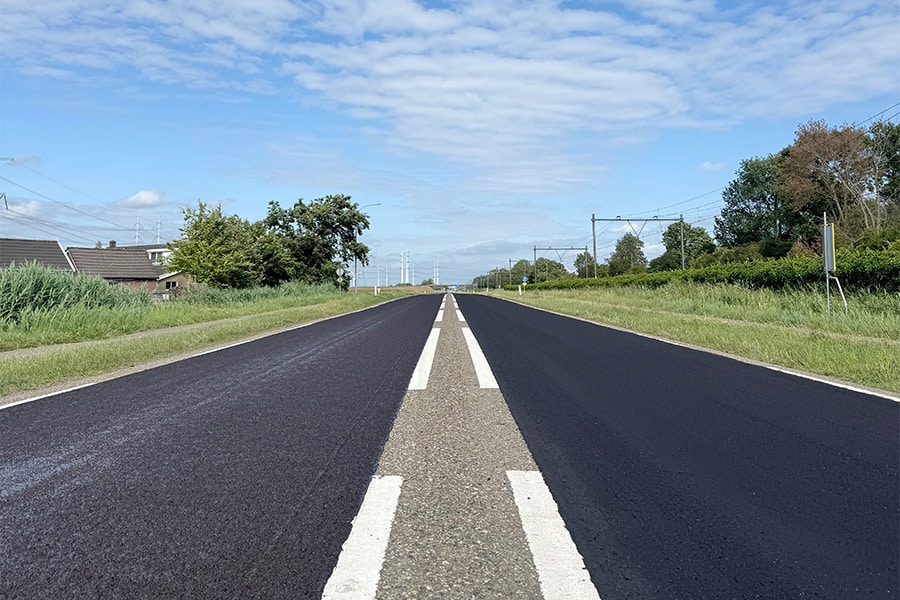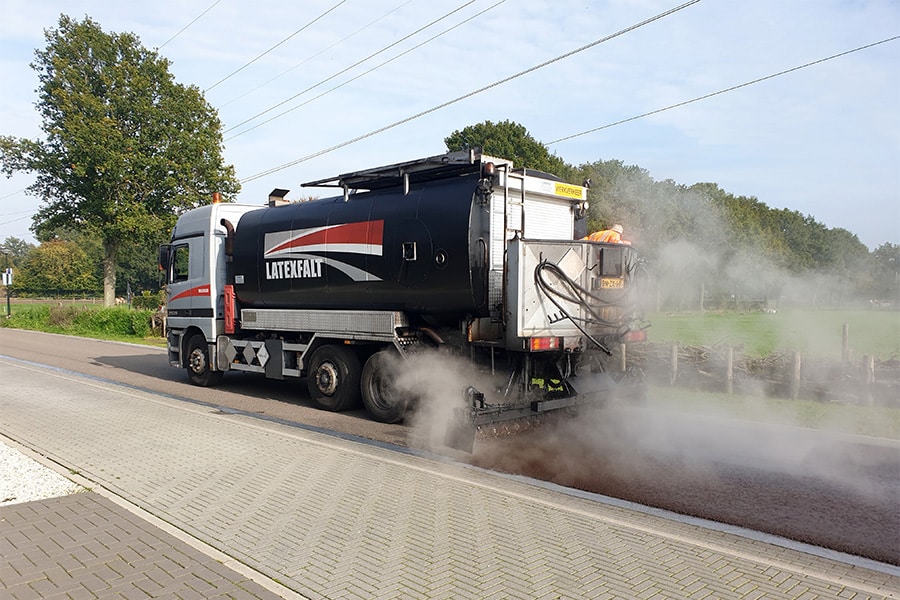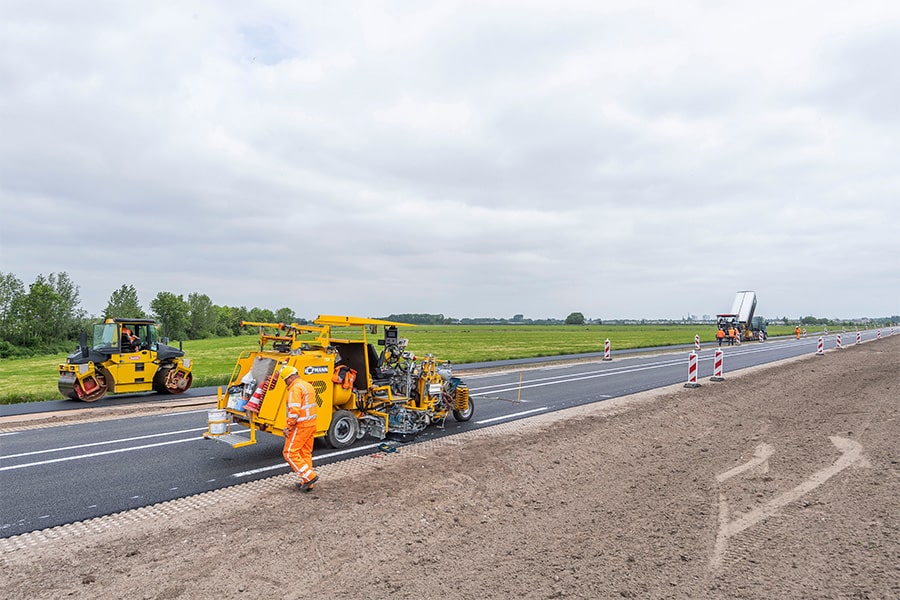
Guideline and acceptance boxes for Warm Mix Asphalt in the works
At the December 2022 Asphalt Day, the Bituminous Works Section of Bouwend Nederland made the concept of Hot Mix Asphalt world famous. Phasing out the current Hot Mix Asphalt is a first serious step to reduce CO2 emissions from asphalt production. From January 1, 2025, Warm Mix Asphalt will be the norm. A step that is big on paper, but according to experts in practice proves to be very small. To make it easier for all stakeholders, road builders and clients, a new CROW guideline is currently being worked on. The necessary acceptance sections are also being created to show the outside world that the techniques described in the new guideline lead to good quality asphalt.
The Warm Mix Asphalt initiative came from the Bituminous Works trade group. "In 2021, we brainstormed with our supporters about how we as a sector can contribute to the climate goals," says Ron Wesseling, trade group manager of the Bituminous Works trade group at Bouwend Nederland. "What is relatively low-hanging fruit? That is, of course, bringing down the production temperature. That means you need substantially less gas to produce asphalt. With the transition to Warm Mix Asphalt, we are lowering the temperature from around 170 degrees Celsius of the current Hot Mix to asphalt mixtures between 100 and 140 degrees Celsius. That results in a reduction of 10 to a maximum of 30% on CO2 emissions."
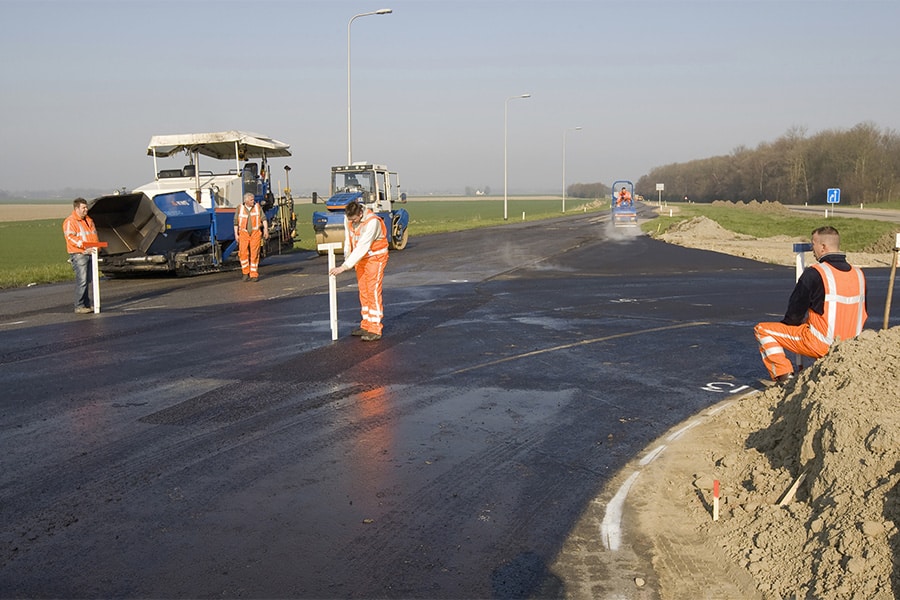
No longer for sale
According to Ron, the challenge is not so much in lowering the temperature. "Basically, any asphalt plant can run a Warm Mix mix. The biggest challenge is in getting used to the fact that today's asphalt won't be available tomorrow. For certain types of roads, we automatically turn to a certain solution that has performed heartily for years. So that particular mixture will soon no longer be for sale. Just as we work in the Netherlands with all kinds of type tests to put products on the market, Warm Mix Asphalt is therefore formally a different asphalt mixture. It is not in CROW's standard RAW provisions. So work to be done."
Transition path Road paving
The Warm Mix Asphalt concept was picked up by several parties after its presentation at Asphalt Day 2022. "The only way you can make a transition a success is to do it collectively," Ron believes. "For example, we were approached by the Transition Path Road Pavement, an initiative of the Ministry of Infrastructure and Water Management implemented by the Department of Public Works, to act jointly. They are also working to make the entire road paving chain more sustainable towards net zero CO2-eq emissions. Warm Mix Asphalt is a nice first step. In 2023 we started the conversation with each other and a working group was formed to arrive at a CROW guideline for the processing and application of Warm Mix Asphalt."
Parity island
According to Ron, CROW is a very important and validated organization where clients and contractors make agreements with each other within CROW's rules of the game on how to deal with, in this case, road pavement, but where all kinds of contract forms are also managed. "I see it as a joint island for the sector, where you can talk very freely with each other as client and contractor about how you organize things in the sector. Without a traditional client/contractor relationship and without any competition. This generates very useful ideas that we include in the directive. Think of things like what a contract looks like or the requirements an asphalt product has to meet."
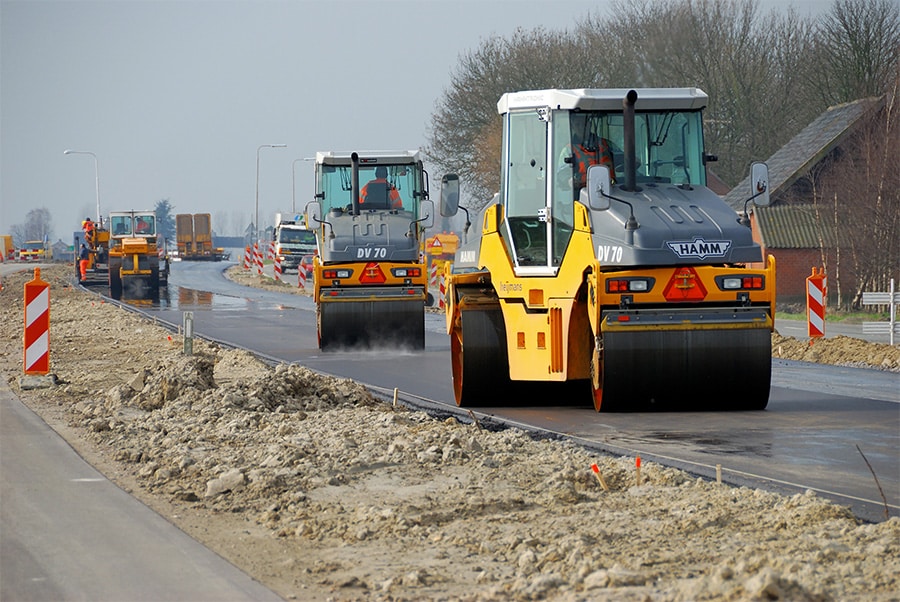
CROW Directive
The CROW guideline Warm Mix Asphalt will soon describe a number of techniques for making Warm Mix asphalt. "It says, for example, how to process it outside and how to apply it," Ron clarifies. "That gives clarity for the road builders on the one hand, but also for the client who asks for it. Because that's the beauty of a CROW guideline. Everything it says, you can grab blindly off the shelf, so to speak. It has been well thought out so that you can very safely and confidently ask for it and allow it in the acreage." The CROW guideline Warm Mix Asphalt is expected to be presented in the second quarter of 2024.
Acceptance boxes
Separate from the directive, the parties working together to create the WMA directive are also introducing so-called acceptance boxes. "It's a new slogan," Ron realizes. "The acceptance courses are intended to demonstrate to the outside world that the techniques described in the new directive lead to good quality asphalt. The acceptance sections are monitored and assessed by an independent party. How was the construction done, is the compaction in order, do the seams connect properly? In short, is there a good and tight road?" According to Ron, the new guideline and the acceptance sections help ensure that a client can make the transition from the current Hot Mix Asphalt to Warm Mix mixtures with impunity. "As a matter of fact, quite a few clients have already been convinced and they have fully or partially switched to Warm Mix mixtures."

Communication and implementation plan
Yet there is still a world to be won. The 12 provinces, 342 municipalities, the Department of Public Works and all water boards also need to be informed. "We have drawn up a communication and implementation plan from the implementation group with representatives from municipalities, provinces, asphalt plants and road builders around the item Warm Mix Asphalt. We are pulling together in this and that is quite unique. It is an organic whole in which all kinds of aspects are included," Ron explains and gives an example: "Suppose you have a maintenance contract that runs for a number of years, then you will have to adjust it with the new asphalt mixtures. That too is part of the communication and implementation plan that is created jointly and presented to the market in bite-sized chunks."
Asphalt of the day after tomorrow
And then it will be January 1, 2025. "We assume that by that time people will be sufficiently aware that the step to Warm Mix Asphalt is big on paper, but in practice ultimately turns out to be very small," assures Ron. "And yes, it's true that supposed certainties are partly abandoned because we no longer get what we had. On the other hand, deviating from the beaten path offers a lot of opportunities for the future. Warm Mix Asphalt is a very nice and important first step, but we need to take many more steps to eventually become CO2 neutral as a sector. And in that we are going to make huge strides in the coming years, I am convinced." Ron hints at the use of more and more bio-based materials in the asphalt mix, and he expects the recycling rate to increase. In addition, he does not rule out that the temperature will go down even further. "It is possible that in the distant future we will even be able to produce asphalt at ambient temperature. There are a lot of developments going on. It will mean that, formally speaking, we will always be dealing with a different asphalt mixture in the future. The asphalt of the day after tomorrow is not the asphalt of tomorrow."
Review of Asphalt Day 2023
Needless to say, phasing out Hot Mix Asphalt was the talk of the day during Asphalt Day 2023 on Thursday, Dec. 21, 2023. "We had almost 500 people on the floor," says Ron Wesseling, trade group manager for Bituminous Works at Bouwend Nederland. "The atmosphere was very good. Thanks also to the interesting speaker program with a strong focus on sustainability and everything that comes with it from different perspectives. The phasing out of Hot Mix Asphalt is just one of the many changes facing the sector in the route to circular and CO2 neutral asphalt."
Special attention included sustainable equipment for applying asphalt. "Steps are being made in this too," Ron notes. "You slowly see electrification taking hold. It is going slowly, because large machine manufacturers are still only working on it sparsely. As innovative as the Dutch are, many companies are picking up the gauntlet themselves and are working on all kinds of developments. Nice steps to gain the necessary experience with electric equipment. At the same time, regular machines are increasingly running on HVO 100 biofuel. That too leads to serious savings in CO2 emissions. Furthermore, much more attention is being paid to efficient and smart logistics on the construction site. In short, really good steps are being taken. That, combined with sustainably produced asphalt, means that the road construction industry is taking a giant leap in sustainability."
Another important issue discussed during Asphalt Day was the influx of personnel. "The road construction industry is also experiencing the effects of the tight labor market," Ron acknowledged. "But with all the developments, partly prompted by sustainability, personnel with other qualifications will also be needed in the future. To maintain electric equipment, for example, you need specifically trained people. It fits in perfectly with the campaign 'De Bouw maakt Het' by Bouwend Nederland. With all kinds of interesting developments, we are trying to put the sector on the map and convince young people that it is also a sector where technology plays an important role."
